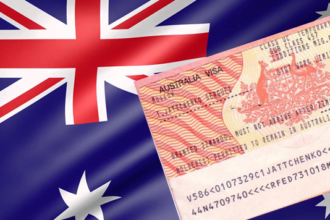Visa refusals are a common hurdle in the immigration process, especially when applying for Australian visas. While receiving a refusal notice can be disheartening, it’s essential to understand the reasons behind the decision and explore the available options to address the issue. In this article, we will delve deep into the various aspects of Australian visa refusals, providing you with a detailed understanding of how to handle them effectively.
Understanding Australian Visa Refusals
Visa refusals occur when the Department of Home Affairs (DHA) determines that an applicant does not meet the necessary criteria for a visa. Australia has stringent requirements across various visa categories, including tourist, work, student, and permanent residency visas. When an applicant fails to meet one or more of these criteria, the visa application is refused.
Common Reasons for Visa Refusals
Several factors contribute to Australian visa refusals. The most common reasons include:
-
Health and Medical Issues
-
The Australian government has strict health requirements for visa applicants. If an applicant has a medical condition that could pose a public health risk or incur significant costs to the Australian healthcare system, their visa application could be refused. This includes serious conditions such as tuberculosis, HIV/AIDS, or other contagious diseases.
-
-
Character Concerns
-
Applicants with a criminal record or those who fail to provide the necessary police clearance certificates may have their visa applications refused. Australia places a strong emphasis on the character of applicants, and criminal history is a significant factor considered during the visa decision-making process.
-
-
Financial Insufficiency
-
Demonstrating financial stability is essential when applying for a visa to Australia. If an applicant cannot prove that they have sufficient funds to support themselves during their stay, the visa application is likely to be refused. This includes not only showing enough money to cover travel and accommodation costs but also to cover daily expenses.
-
-
Incomplete or Incorrect Documentation
-
Providing incomplete or inaccurate information can result in a refusal. The DHA may refuse your visa if required documents such as passport details, health checks, police clearances, financial documents, or education qualifications are missing or incomplete.
-
-
Failure to Meet Genuine Temporary Entrant (GTE) Requirement
-
For visas like the Subclass 500 (Student Visa) or Subclass 600 (Visitor Visa), applicants must meet the Genuine Temporary Entrant requirement, which ensures that the applicant intends to stay temporarily in Australia and will return to their home country after the visa expires. If the DHA suspects the applicant has permanent settlement intentions, the application may be refused.
-
-
Misrepresentation or Fraud
-
Providing false or misleading information in your visa application is considered a serious offense. If the DHA determines that an applicant has submitted fraudulent documents or lied about essential aspects of their application, the visa will be refused, and the applicant may be banned from applying for future visas.
-
Steps to Take After Receiving a Visa Refusal
It’s important to stay calm and focused after receiving a visa refusal. There are several steps you can take to address the situation.
1. Review the Refusal Notice
The first step is to carefully read the refusal letter sent by the Department of Home Affairs. This letter will outline the reasons for your visa refusal, which is crucial in understanding what went wrong. The letter may also provide a timeframe within which you can appeal or reapply. Understanding the specific grounds for refusal will allow you to take the right steps in addressing the issues.
2. Assess Your Options
Once you have reviewed the refusal notice, you’ll need to consider your options. The two most common options are to either reapply for the visa or to appeal the decision.
Option 1: Reapply for the Visa
If the refusal was based on minor issues, such as incomplete documentation or insufficient evidence of financial support, you can reapply for the visa. Here’s how to approach this:
-
Address the Issues: Review the reasons for your refusal and ensure that the issues are rectified before reapplying. For example, if your visa was refused because of financial insufficiency, provide updated bank statements or a sponsor’s financial documents to demonstrate your financial capacity.
-
Submit New Documents: Make sure that all required documents are submitted and are up to date. In some cases, the refusal may have been due to outdated or missing information, so be sure to double-check everything before reapplying.
Option 2: Appeal the Decision
If you believe that the refusal was unjust or based on incorrect information, you have the right to appeal the decision to the Administrative Appeals Tribunal (AAT). The AAT is an independent body that reviews visa decisions made by the DHA. However, it’s important to understand that the AAT will not overturn a refusal just because you disagree with the decision; they will only reconsider the decision based on new evidence or an error in the original decision.
-
Lodging an Appeal: You must lodge your appeal within the specified time frame, which is typically 21 days from the date of the refusal notice for most visa types. This time frame can vary, so it’s essential to check your specific case’s details.
-
The Appeal Process: The AAT will review your case and may request additional documentation or an interview. The review process can take several months, and there may be associated fees.
In some cases, the Minister for Immigration may intervene and grant the visa through Ministerial Intervention, but this is typically reserved for exceptional or compassionate cases.
3. Seek Professional Advice
Navigating the visa refusal process can be complex, and seeking assistance from an experienced migration agent or immigration lawyer can greatly improve your chances of success. These professionals can help you understand the refusal reasons, advise you on the best course of action, and assist with preparing your appeal or reapplication.
Reapplying After a Visa Refusal
If you choose to reapply for a visa after a refusal, there are several important steps to follow to increase your chances of approval:
1. Correct the Issues That Led to the Refusal
-
If your visa was refused due to incomplete documentation, ensure that you submit all required documents the second time.
-
If financial instability was an issue, make sure to provide comprehensive and accurate proof of your financial status, such as bank statements, tax returns, and sponsorship details.
-
If the refusal was based on health concerns, you may need to submit additional medical documentation or undergo further medical examinations.
2. Provide Updated Information
In your reapplication, provide the most current and accurate information. For example, if there have been any changes in your financial situation, employment, or personal circumstances since the initial application, be sure to include that information.
3. Be Transparent
Ensure that all the information you provide is honest and transparent. If there are any issues with your health, character, or finances, it’s better to address them upfront than risk a more severe refusal in the future. Misrepresentation or hiding relevant details can lead to more serious consequences, including visa bans.
How to Prevent Future Visa Refusals
To avoid the stress and disappointment of visa refusals in the future, take the following steps:
1. Ensure Complete and Accurate Documentation
Always double-check the documents you submit with your application. Missing or incomplete documents are one of the most common reasons for visa refusals. Prepare a checklist of all the required documents and ensure they are valid, up-to-date, and correctly formatted.
2. Meet All Eligibility Criteria
Before applying for a visa, review the eligibility requirements thoroughly. Make sure you meet all the necessary health, financial, and character requirements. For student visas, ensure that you can prove your intentions to return to your home country after completing your studies.
3. Seek Professional Guidance
If you are unsure about any aspect of your visa application, it’s advisable to consult a registered migration agent. They can provide expert advice on your application, helping you avoid common mistakes that may lead to a refusal.
Conclusion
A visa refusal can be a setback, but it is not the end of the road. By understanding the reasons behind the refusal, considering your options carefully, and ensuring that your future applications are complete and accurate, you can increase your chances of successfully obtaining a visa. Whether you choose to reapply or appeal the decision, taking the right steps is crucial in moving forward. Don’t hesitate to seek professional assistance if needed, as this can provide valuable guidance throughout the process.



